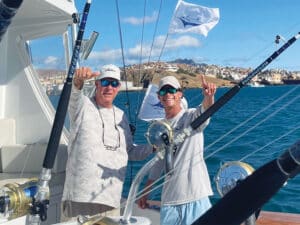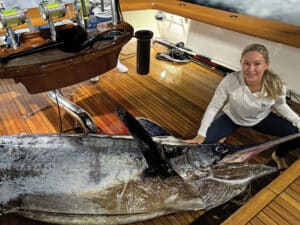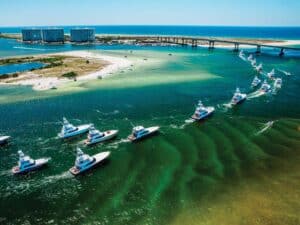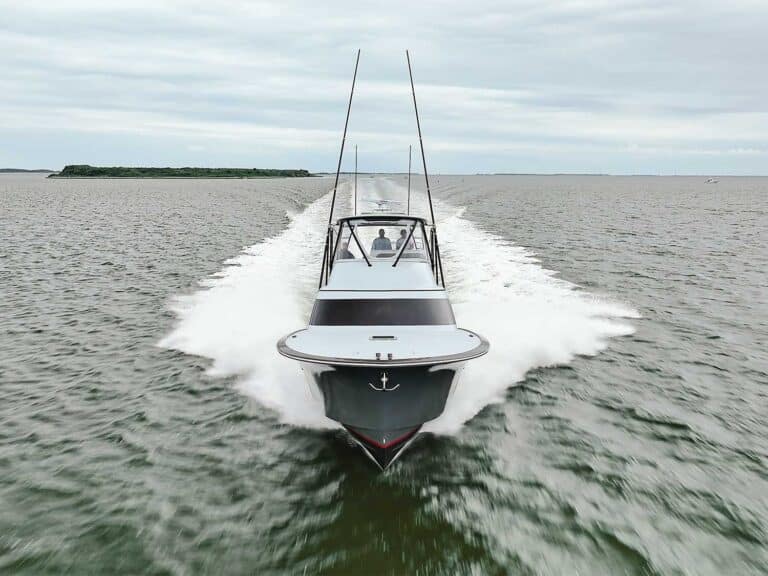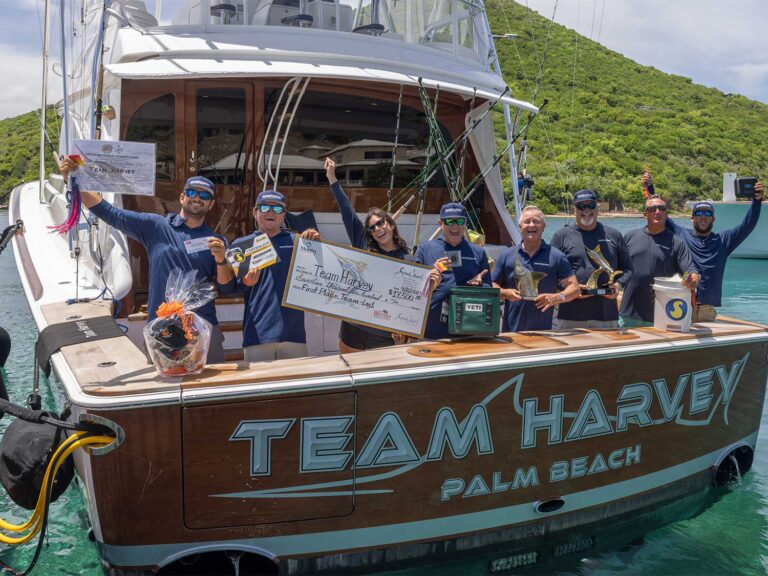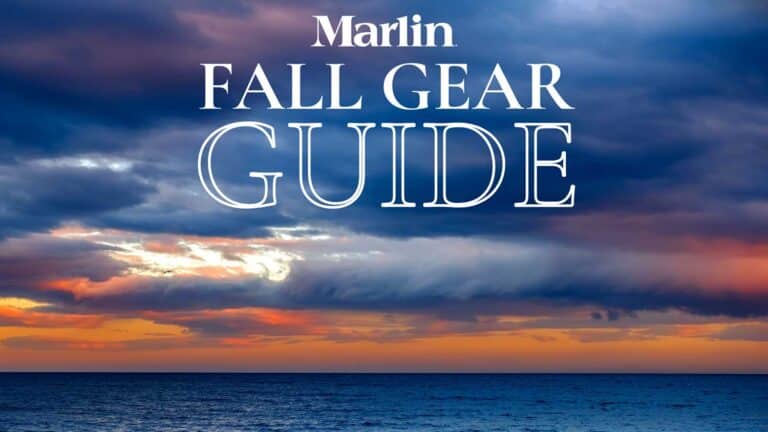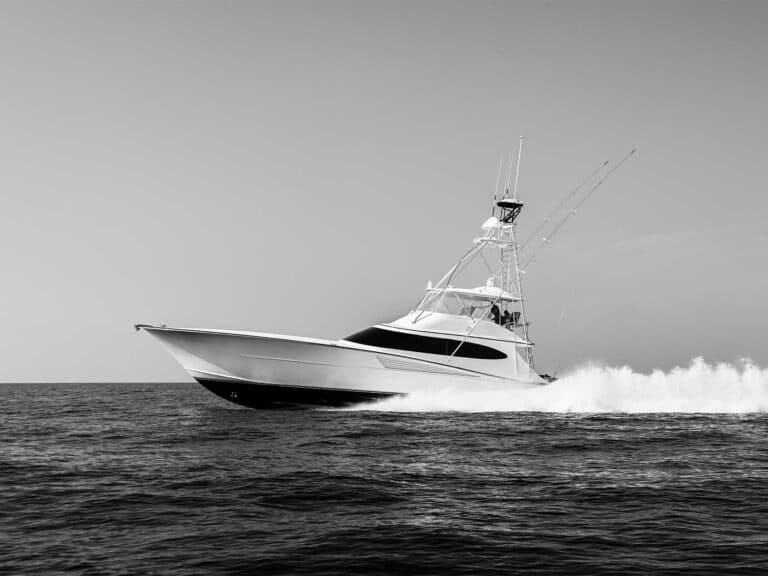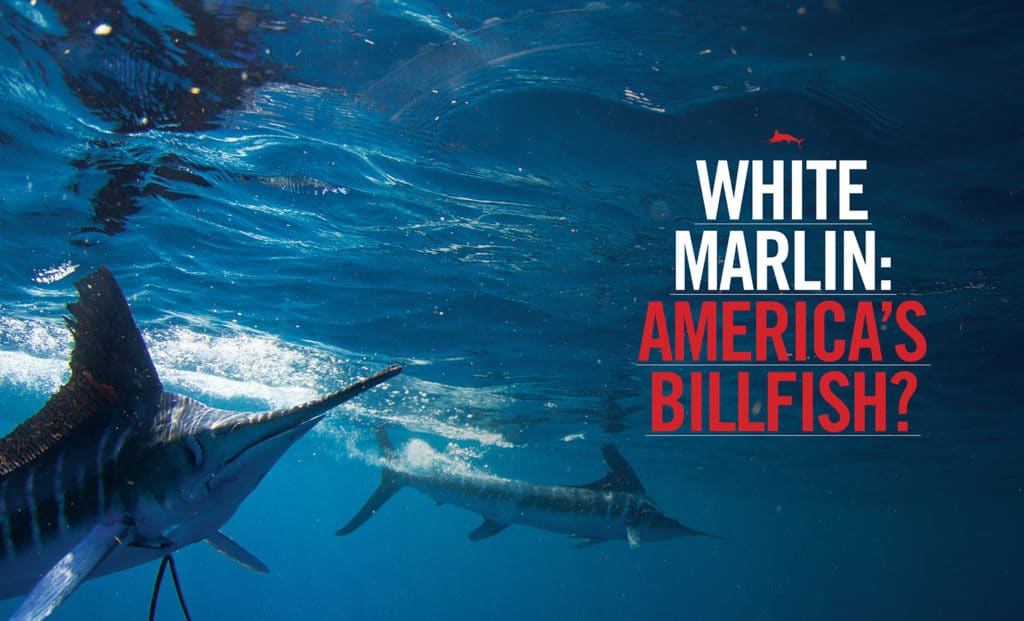
White Marlin: America’s Billfish?
Is a blue marlin on your bucket list? If so, just book a flight to St. Thomas in the U.S. Virgin Islands, or go to the Dominican Republic. Want sailfish? Head for Guatemala or Isla Mujeres, Mexico. But if it’s white marlin you seek, look no further than the eastern seaboard of the good ol’ U.S. of A. We’ve got the world’s best white marlin fishing within a three‑hour flight from pretty much anywhere east of the Mississippi. Let’s go fishing for America’s marlin — no passport required.
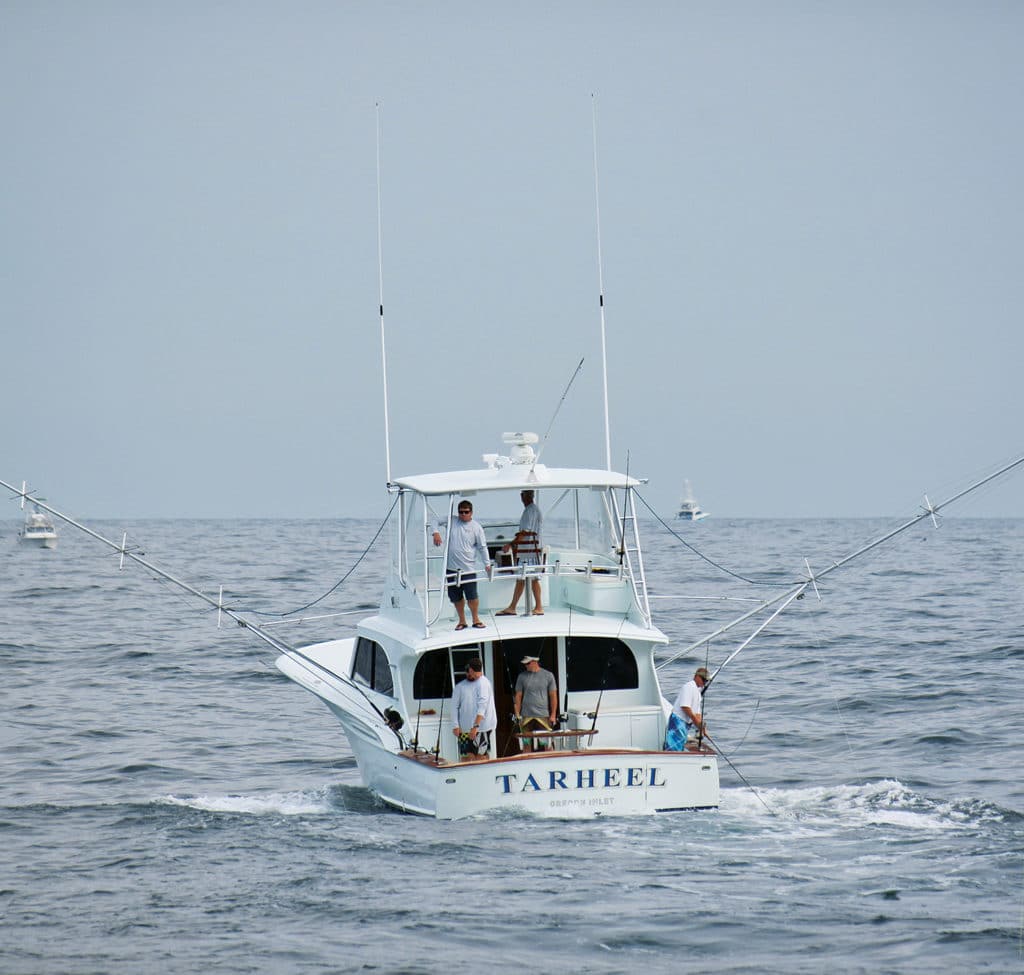
White marlin are the smallest of the world’s marlin species, but what they lack in size, they more than make up for in terms of beauty. And don’t be fooled: Beneath that graceful ballet dancer’s body is the soul of a sword fighter. On light tackle, white marlin are a real handful, often spending as much time airborne as they do fighting deep, wowing anglers with their speed and tail-walking antics. And they rarely travel alone — multiple bites are common as packs of aggressive fish invade the spread. But whites can also be super finicky, dropping a bait if they feel the slightest resistance.
While white marlin can be caught throughout the Gulf of Mexico and from the Florida Keys to the offshore canyons of the Northeast, the bulk of the action takes place in late summer and early fall from the Outer Banks of North Carolina to Cape May, New Jersey. For decades, the area around Oregon Inlet, North Carolina, has been home to some of the world’s best white marlin fishing, due in part to the area’s talented fleet of charter captains. Among these, Capt. John Bayliss is one of the most notable.
Bayliss was born in California but got to North Carolina just as fast as he could, working the deck for renowned captains Emory Dillon, Sam Stokes and Chip Shafer along the way to running his own boat, Tarheel, in 1980. After a stint at the helm of the Hatteras factory demo Hatterascal, he launched Bayliss Boatworks in 2002, building some of the world’s finest custom boats from a state-of-the-art facility in Wanchese, North Carolina. Since those early days, he has seen significant changes in both the fishery and the fishermen.
Bayliss says white marlin season peaks off the Carolina coast in August and September, although you must always keep an eye on the weather because that’s hurricane season in this part of the world. He looks for eddies and pools of water that spin off the north-flowing Gulf Stream to hold white marlin. “Water color has a lot to do with it,” he says. “I like to fish in the blended blue-green water in a defined pool that’s holding bait. The longer it’s been stable in an area, the more likely it is to produce good fishing.”
Bayliss will also keep an eye out for birds, a sure sign of life in the open ocean. “I look for the shearwaters and terns either working bait or sitting on the water. Sometimes they’ll lie to you, but for the most part, the birds are pretty reliable.”
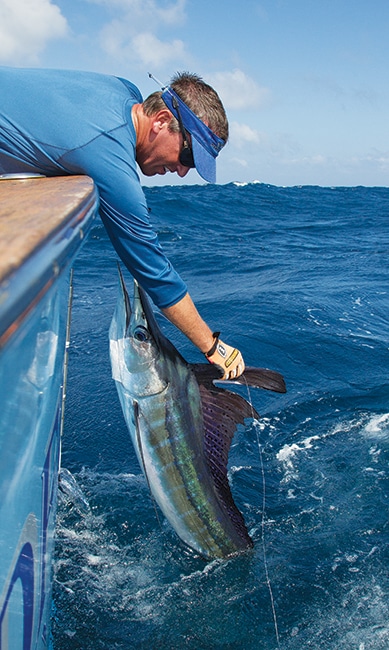
“When I first started, we were fishing just like everyone else, using big hooks on wire leaders and Penn 50s. If you caught half of your white marlin bites, that was considered pretty good,” Bayliss says. He credits innovators like Shafer for the shift in tactics that followed. “The guys like Shafer who were going to Florida and Mexico to sailfish were coming back and fishing with lighter leaders and hooks, using dredges,” he says. “They really showed us what we could do with our white marlin here at home.” By downsizing the tackle, it became possible to convert a much higher percentage of bites while having a lot more fun along the way, too.
His setup for white marlin fishing is fairly straightforward, starting with a pair of either double- or triple-tier natural-bait dredges skirted with small Kingbusters for flash and color. A pair of rubber-squid daisy-chain teasers run from the bridge are layered into the spread. Bayliss prefers to spool his reels with either 20- or 25-pound Sufix high-vis monofilament for a freer drop-back to the notoriously finicky whites. Sixty-pound fluorocarbon leader and a 7/0 to 8/0 Mustad non-offset circle hook round out the terminal gear.
Ballyhoo get rigged using Monel wire and a small swivel through the top of the head, and they are fished through the outrigger clips with the anglers actively holding their rods with the reels in free-spool. When white marlin fishing, it’s critical that the fish be given an immediate drop-back on the bite with no added resistance. They are masters of stripping a bait clean, leaving the unlucky angler with the dreaded sancocho. By holding the rods and being ready for the bite, the odds are tipped in favor of the angler.
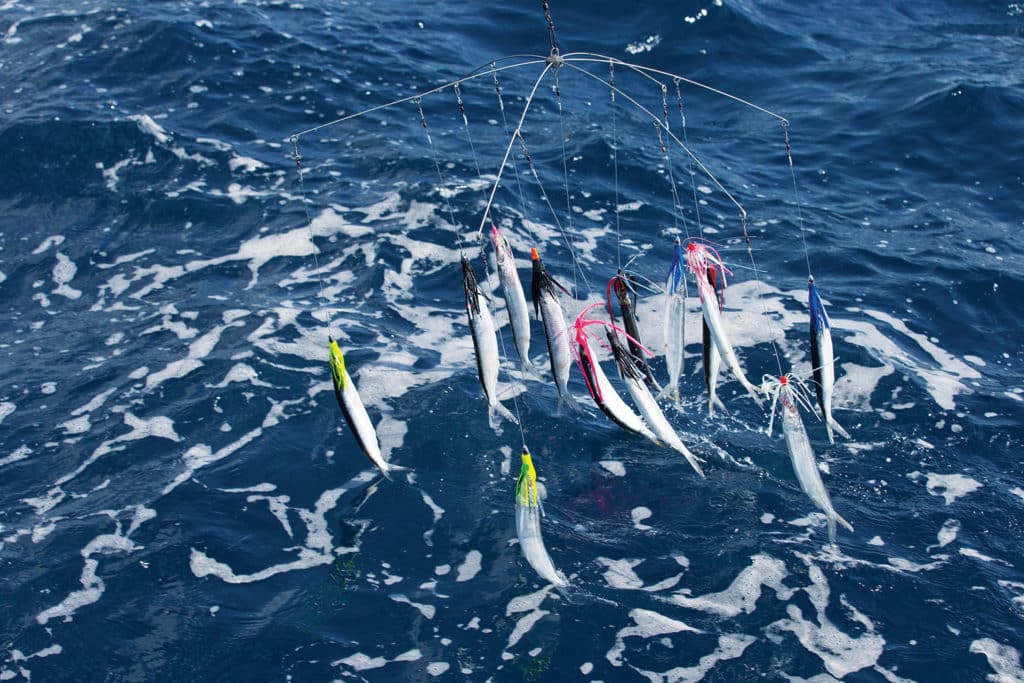
Bayliss has also seen an increase in trolling speed over the last few years. “We started off dredge fishing at 5 to 6½ knots,” he says. “Now, it seems everyone’s going a little faster than that. You can cover more ground and find the fish, and it also gives you a little more aggressive bite. Guys are fishing anywhere from 6½ to 7½ knots, although we will slow down once we get around the fish, especially if they are actively working bait on the surface.”
Given the white marlin’s propensity for attacking in numbers, Bayliss will also put the boat in a turn once that first fish comes tight in an effort to turn a single into a double and a double into a triple or quad. It’s absolutely heart-stopping to watch a horde of white marlin attack the spread, dorsal fins up and neon pectoral fins glowing blue. Just grab a rod — They’re everywhere! When the bite is on, it’s not uncommon for boats with above-average anglers to score anywhere from eight to 20 white marlin releases or more in a day’s fishing. “One of our best days, we caught 30 on a last-minute fun fishing trip and we were 32 miles from the inlet,” Bayliss reports.
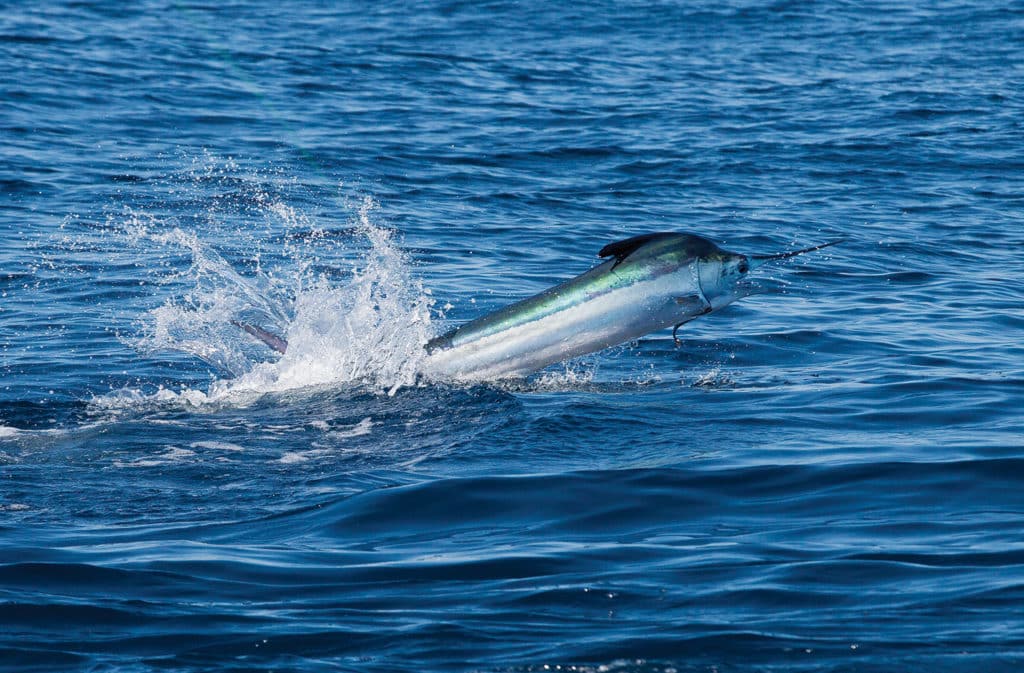
Capt. Ryan Higgins started his sport-fishing career out of Bud N’ Mary’s Marina in Islamorada, Florida, before graduating from the College of Charleston in South Carolina and taking a job running a 70-foot sport-fisherman for Steve Potts, the founder of Scout Boats. The rig traveled extensively and spent quite a bit of time in Venezuela each season, where Higgins learned the most efficient ways to target La Guaira’s white marlin. He transitioned to Viking Yachts in 2003, where he’s been the factory demo captain for nearly 12 years.
Cape May lies roughly at the northern end of the white marlin’s East Coast range, and the Canyon Club is ground zero for the northern action. Higgins says that the best bite here takes place in September. “We have good fishing starting in August, but our big days have always been in September,” he reports. “For the last five years or so, the fish have been pulled in by good water off the Gulf Stream as they follow the bait.” It’s a recurring theme for white marlin fishing: Find those eddies that hold bait and the chances of good fishing skyrocket. “I also watch for birds on the radar and in the binoculars, and sailor gulls are a dead giveaway,” he adds. “Even if you see flocks of birds sitting on the water, it’s an area that you might want to spend some time in. The marlin might only be cutting bait on the surface for 10 or 15 minutes before they go deep, so the birds will just sit around waiting for them to show back up. Especially if I mark bait deep, I’ll work that area or come back there later in the day.”
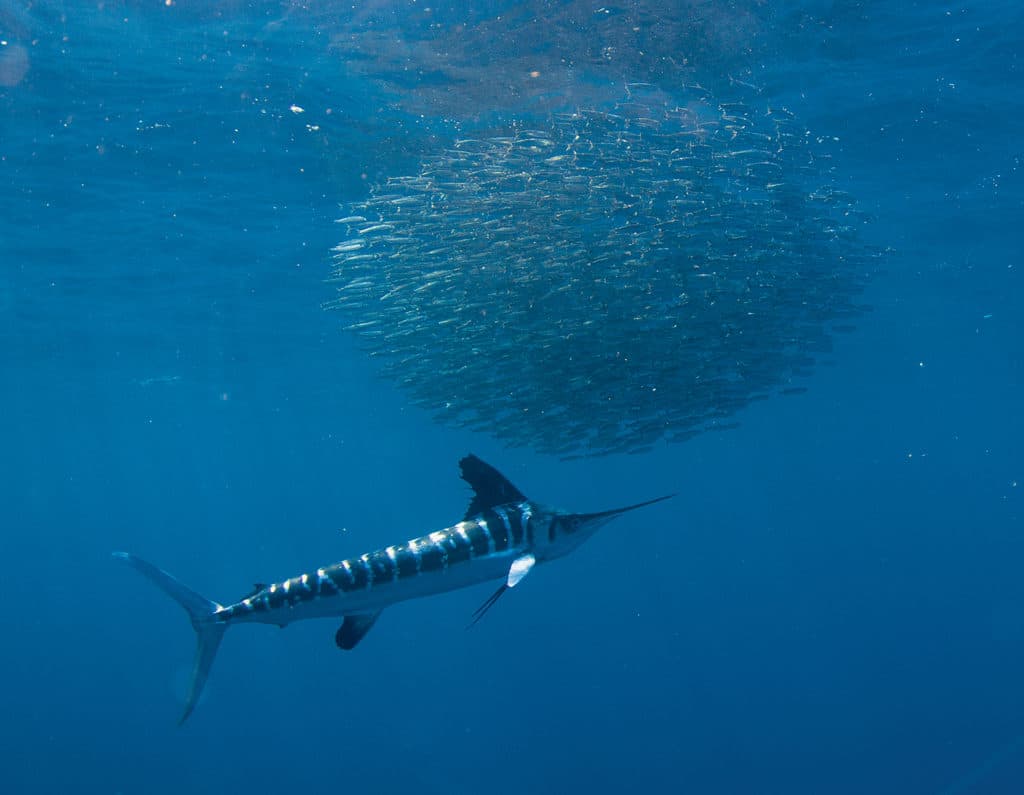
Higgins also spends a good portion of his day head down in the electronics. “I’m constantly tuning my sounder to mark fish and bait,” he says. “Usually I’m looking from 300 feet up to the surface, but if I do get some deeper marks, then I will work the area knowing that those fish will eventually come to the surface at some point.” He also points out the necessity of networking. “The Northeast is such a vast area compared to someplace like St. Thomas, where everyone’s on the North Drop and you hear them on the radio all day,” he points out. “Here, you have to develop a network of people you can trust for information, then find creative ways to stay in touch.”
Higgins uses a satellite telephone but also leans on technology for an edge in communications. “With the KVH V3 system, the boat is always online, so I can send emails or texts to find out what’s going on in other places,” he says. “We’ve been out of position by as much as 50 or 60 miles in some tournaments; it’s tough to make the call to pick up and run, but it’s better to fish productive water. We’ve got a 40-knot cruise — and that helps when we have to relocate in a hurry.”
Because there are more than a few blue marlin around early in the season, Higgins pulls a pair of lures on the short riggers; otherwise it’s a standard spread of circle-hooked ballyhoo over natural-bait dredges. He uses the Shimano Tyrnos or similar reels with the lugs at the top for attaching a harness. “We also have bigeye tuna from time to time along with blue marlin, and you need to be able to strap into a harness if you have a big fish on a smaller reel,” he advises, noting that many of the new light-tackle reels lack the necessary attachment points. The team also keeps a bigger pitch bait in reserve in case a larger blue shows up unannounced on a teaser or dredge.
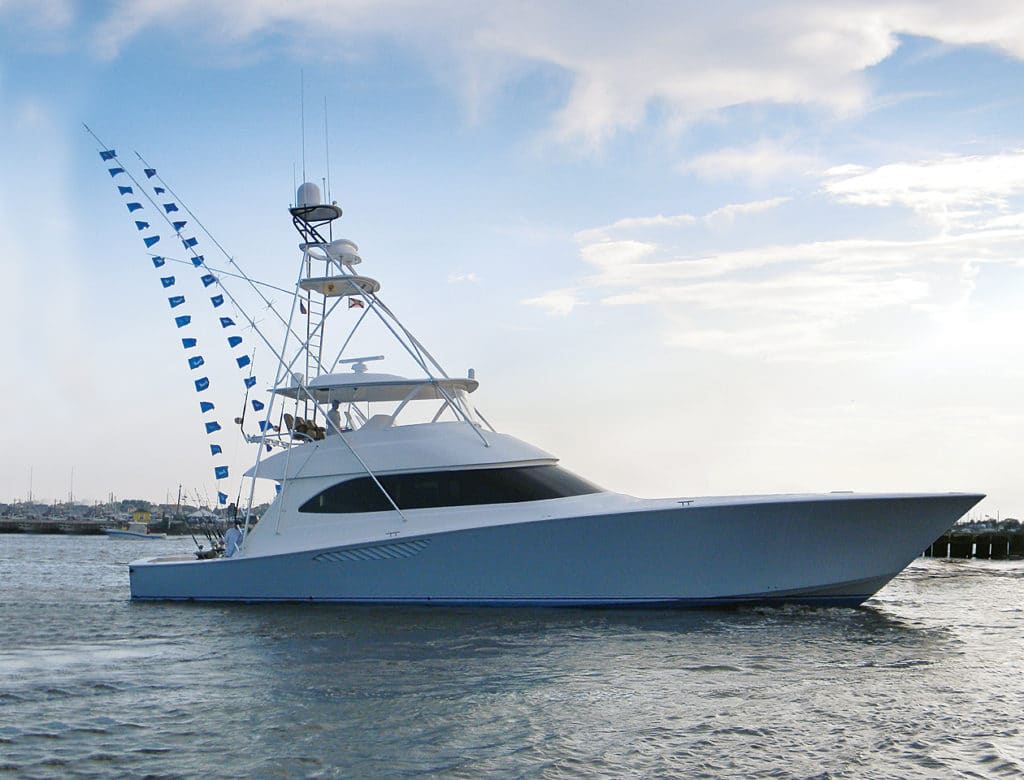
Held every year in Ocean City, Maryland, the White Marlin Open is the largest billfish tournament in the world in terms of participation. And while the event’s history was well-covered in “The White Marlin Open: A History Lesson,” it’s interesting to hear what it takes to win seven figures in this tournament from founder Jim Motsko.
“You don’t have to go across the board in all the optional categories to win a significant amount of money,” Motsko points out. “It’s better to stay within your budget and focus on what you’re good at, whether it’s white marlin or tuna or blue marlin, rather than entering every single jackpot level. Most people don’t win multiple divisions, anyway.” By staying on track, you’re more apt to concentrate on doing well in one category rather than taking a shotgun approach to every eligible species.
New options for the 2015 White Marlin Open included a new $10,000 “winner take all” level for white marlin, as well as a top daily tuna category. And while white marlin are eligible to be weighed in, 95 to 98 percent are released; those that do come to the docks are donated to feed the less fortunate through the Maryland Food Bank.
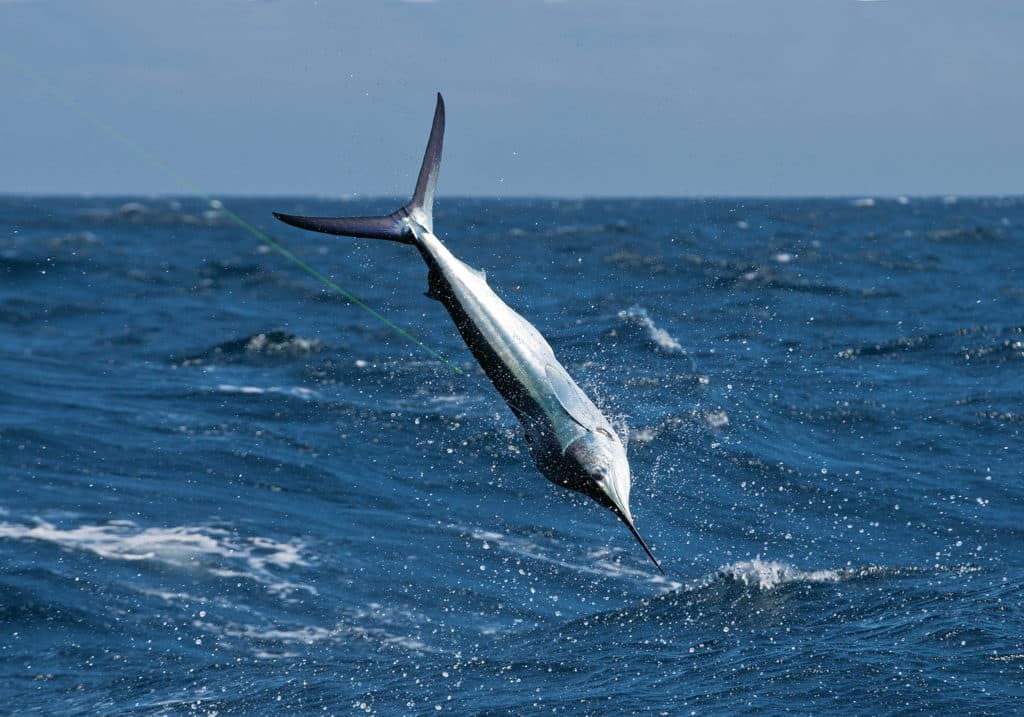
So what can we attribute this increased white marlin activity to, if anything? Good question. There’s no doubt that the widespread use of circle hooks has greatly reduced the post-release mortality of white marlin, but more than that, the answers lie with the fish. Higgins points to increased coverage and communication offshore, allowing more boats to get in on the action and release more marlin, while Bayliss credits the cyclical nature of the oceans themselves — some years are just better than others for species like yellowfin tuna, blue marlin and white marlin depending on water conditions, presence or absence of bait and a score of other factors.
“I had a chance to fish with Dick Weber two years ago on our demo boat,” Higgins says, “Dick really pioneered the fishing for a lot of different species in the Northeast, including white marlin. We had a great trip with double-digit whites plus a blue marlin, so I asked him how this compared to his days when he was first exploring the fishery. He said that we’re seeing that epic bite of a lifetime now, that it’s never been this good at any point in the past, ever. Coming from someone like Dick, that means a lot. The glory days of white marlin fishing are right here, right now.”

